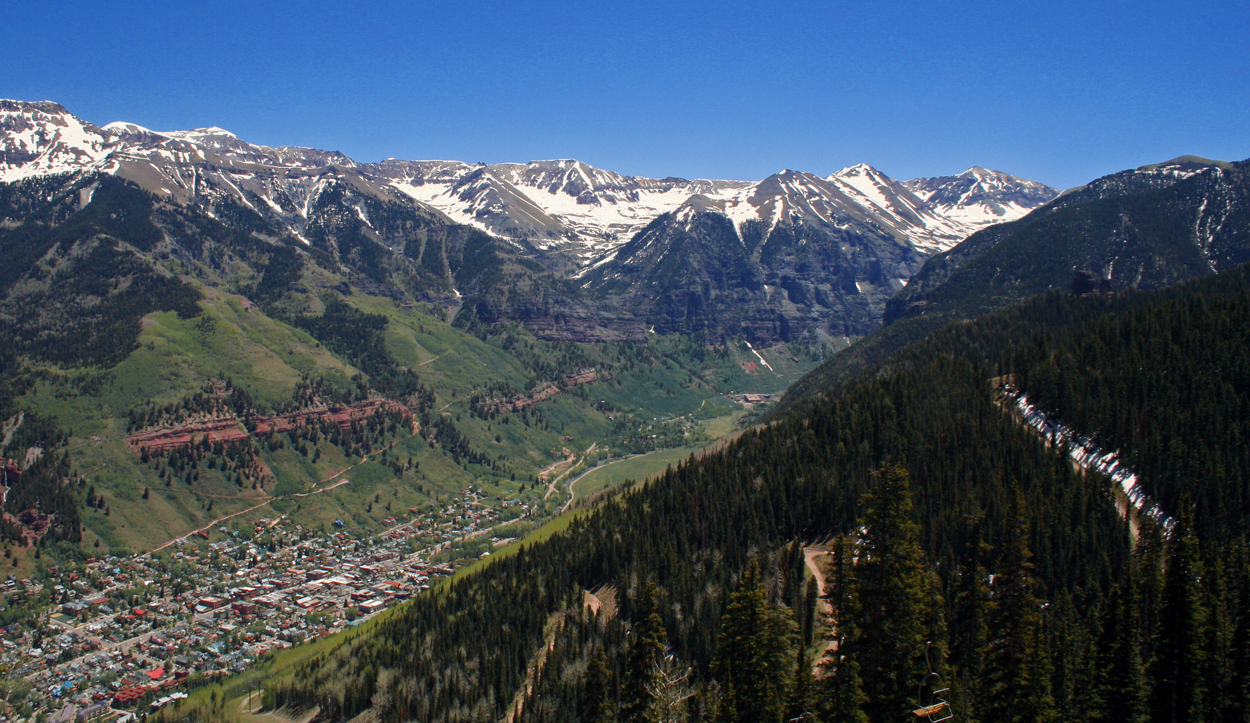There is one element of the series’ development that stands out pretty clearly in my mind, though; something which I feel is an integral part of it—the setting. Colorado in the first decade of the 20th century. Again, I can’t say exactly when I picked this time and place, but I do remember how and why. It came about mainly because of two books I read, and a random sentence in a third. The first was Nothing Daunted: The Unexpected Education of Two Society Girls in the West by Dorothy Wickenden, and the second was Clover by Susan Coolidge. The former was nonfiction, the latter fiction; both were set in Colorado, and the descriptions of the setting in both books fascinated me. To begin with, I’ve always adored mountains. In addition, the juxtaposition of early 20th-century modernity with the remnants of the frontier West, as portrayed in Nothing Daunted, presented all sorts of fascinating possibilities for stories. Edwardian-era Colorado had both thriving cities and remote settlements. Ranching, mining, railroads were industries that held plenty of interest. Also, the plot of Clover was driven by the heroine’s accompanying her younger brother to Colorado for his health—which opened up even further possibilities. As a popular resort for invalids and travelers of all sorts and social classes, where could I find a better place for bringing in whatever characters I needed to fill the cast of a mystery?
Someone’s Words
I’ve become very fond of novels that open each chapter with a quotation (something that I wrote about once before on this blog, quite a while ago). The last two good novels I read that used this method were Hand and Ring by Anna Katharine Green and Nine Coaches Waiting by Mary Stewart. That last one made particularly superb use of them, with sources ranging from Shakespeare to Dickens to Elizabeth Barrett Browning and more, each perfectly suited to the events within the chapters.
I’ve always wanted to do this myself, and I’ve finally happened on my opportunity. Last summer I came across a passage in a book I was reading that perfectly fit the underlying theme of a Mrs. Meade story which was then in the planning stages. The thought of what it would be like to use the quotation at the beginning of the story briefly crossed my mind, and then flitted away. But later on it came back to me, and I thought—why not? Since then, apt opening quotations have popped into my head during the outlining of the next few stories, so I’ve delightedly decided to make them a feature of the series. I’m even going to go back and insert a quotation at the opening of The Silver Shawl—I think I’ve nearly settled on something from Shakespeare.
Going back to pick one for The Silver Shawl has taught me one thing, though. It’s much better and easier to have apt quotations pop into your head and suggest themselves than it is to go looking for one on a particular topic. And for that to happen, you need to have an underlying familiarity with poetry, plays, etc. for your memory to fall back upon. I’ve started making a little conscious effort to improve myself in that respect. I recently put the complete works of Shakespeare on my Kindle (for $1.99!) and I’ve been reading a Sonnet here and there over the last few weeks. It’s a funny thing about Shakespeare—you can plow on for a while through a tangle of unfamiliar phrasing and obscure meaning, and then suddenly happen upon a line that expresses some familiar feeling almost perfectly. The man certainly knew how to put things. Good poetry is like that—as the narrator of Nine Coaches Waiting puts it, “One always got the same shock of recognition and delight when someone’s words swam up to meet a thought or name a picture…Poetry was awfully good material to think with.”
In short, I need to read more poetry.
Mrs. Meade’s Colorado
This is Manitou Springs, Colorado, around 1902. It looks very much as I picture my fictional town of Sour Springs—only Sour Springs is probably a little smaller.
 |
| Click to enlarge |
A panorama of Denver circa 1898. All of these pictures are photochrom prints—an early colorization process that produced color images from black-and-white negatives—by the Detroit Photographic Company.
Most of these pictures are from photographs taken by William Henry Jackson, the Detroit Photographic Company’s best-known photographer. Here’s the original black-and-white photograph from which this print of Ouray, Colorado circa 1901 was produced.
I was particularly delighted to find this picture of a sunset, which, though taken from Cripple Creek around 1899, very much resembles the sunset over Denver I described in The Silver Shawl.
To see these pictures and eventually more related to the stories, visit the Pinterest board I’ve created for the Mrs. Meade Mysteries. Did I mention that there are going to be more? Yes, another adventure for Mrs. Meade is my current project.





